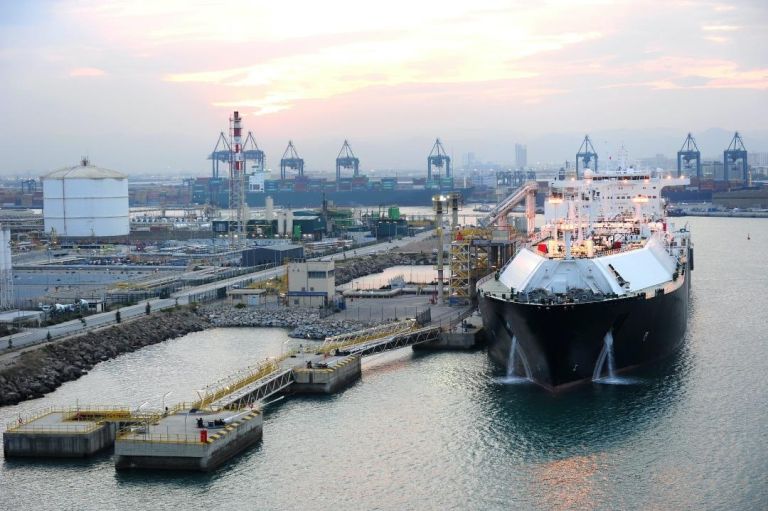Europe Moves Beyond LNG Anxiety: The New Energy and Geopolitical Reality to 2030

Πηγή Φωτογραφίας: https://gcaptain.com/Europe Moves Beyond LNG Anxiety: The New Energy and Geopolitical Reality to 2030
Europe is entering a new era of energy geopolitics, where supply security and diversification are no longer optional goals but foundational principles. After three years marked by volatility, fears of shortages, and historic TTF price spikes, the European gas market is—at last—settling into a new normal.
This stability does not stem from Russia. It is built on the explosive growth of LNG imports, with the United States emerging as the overwhelming supplier reshaping global flows.
Even if diplomatic efforts lead to a cooling of the conflict in Ukraine, the structural shift already underway ensures that Russian pipeline gas will no longer define Europe’s energy future.

Natural Gas Prices Reset: TTF Falls Below €30/MWh — but the Past Will Not Return
Europe’s benchmark prices have dropped below €30/MWh for the first time since 2021. Yet analysts agree on one point:
- pre-crisis price levels will not return,
- stable LNG supply—not cheap pipelines—now anchors the market,
- Europe is paying a security premium, but gaining reliability.
The continent has effectively replaced dependence on Russia with a multi-supplier LNG strategy, led overwhelmingly by the U.S.
A Psychological Shift in the Market
A few years ago, last week’s cold snap across northwestern Europe—causing an 80% surge in gas demand—would have ignited:
- panic buying,
- price shocks,
- political pressure at every level.
This winter? Prices barely moved.
Gas storage levels:
- 79% full this year
- vs 88% last year
- and a 10-year average of 86.5%
Despite lower storage, traders now operate under a new assumption: Liquidity will be available—because LNG is available.
This marks a fundamental psychological transformation in the European gas market.
LNG as the Stabilizer — and the New Geopolitical Lever
The geopolitics of energy have shifted from pipelines to tankers.
New data shows:
- Global LNG cargoes hit a record 22 million tons last week.
- The U.S. accounted for more than one-third of all cargoes.
- Massive new U.S. liquefaction capacity will come online through 2030.
In effect: LNG is now the West’s strategic energy instrument — and Europe is its primary beneficiary.
Challenges remain:
- U.S. shipping capacity is constrained in the short term.
- Russia’s shadow fleet continues to grow.
- Maritime chokepoints (Suez, Bosporus, Panama) are increasingly sensitive.
But the shift is undeniable: energy geopolitics is now maritime.
Greece’s Emerging Role — Big Potential, Not Yet Fully Realized
Greece has the geographic advantage and the infrastructure to become a major LNG transit hub for Southeast Europe, yet:
- key terminals are not yet operating at full capacity,
- vertical corridors northward lack adequate transmission capability,
- Greece’s role is not yet fully integrated into Brussels’ long-term security planning.
That said, the opportunity remains enormous.
Greece can still become:
a cornerstone of the EU’s LNG architecture and the main entry point for U.S. gas into the Balkans and Eastern Europe.
Households & Industry Still Under Pressure
Even as supply stabilizes, prices remain structurally higher:
- households face significantly more expensive energy,
- heavy industry struggles with elevated electricity costs,
- Europe’s pricing model—where electricity is indexed to gas—creates structural distortions.
The only realistic pathways to long-term price relief include:
- grid-scale batteries,
- long-term LNG contracts,
- gas as a balancing fuel during the renewable transition,
- massive storage expansion.
For now, the energy transition remains costly but essential.
The U.S.: Higher Prices, But Unmatched Stability
U.S. natural gas futures climbed to $4.6/MMBtu, driven by:
- record production at 109.7 bcfd,
- storage levels 5% above seasonal norms,
- LNG export flows hitting new highs of 18 bcfd.
The strategic implication is clear:Europe’s energy map is now written in Washington, not Moscow.
The Age of Pipelines Is Over — The LNG Era Has Just Begun
Europe has:
- secured reliable supplies,
- reduced geopolitical vulnerability,
- stabilized markets,
- but accepted higher baseline prices.
The energy world of 2030 will be shaped by:
- the rise of U.S. LNG
- Europe’s long-term diversification
- new maritime logistics dominance
- the integration of renewables with storage
- reduced dependence on hostile suppliers
The continent enters a new equilibrium—more expensive, but far safer.
Source: pagenews.gr
Διαβάστε όλες τις τελευταίες Ειδήσεις από την Ελλάδα και τον Κόσμο






Το σχόλιο σας